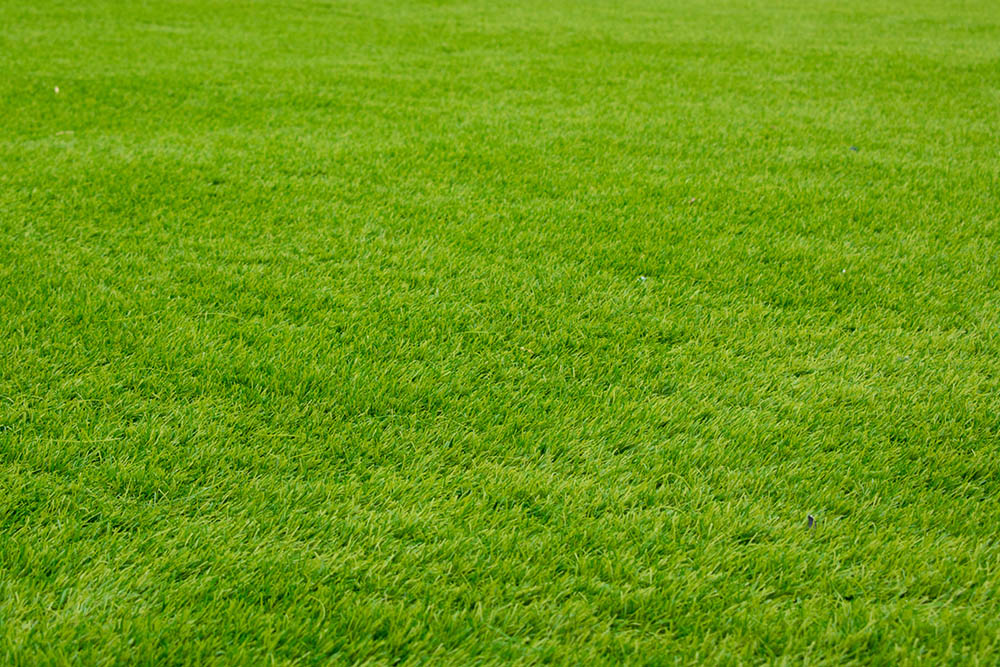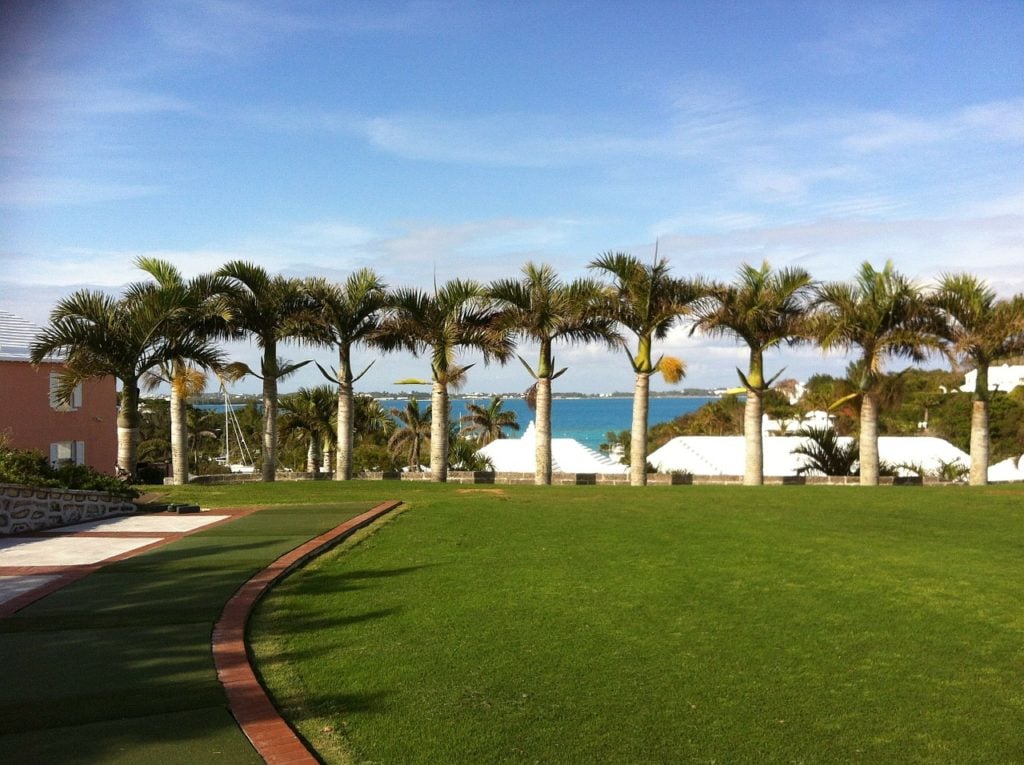17 Types of Bermuda Grass (With Pictures)
-
Pete Ortiz
- Last updated:

Grasses are excellent plants that you can grow in different places, like parks, lawns, sports fields, and pastures. Among the best type of grass is Bermuda grass that has excellent traits for such high-traffic areas.
Bermuda grass has different cultivars with varying growth rates and requires some maintenance. Still, it can be cold- and drought-tolerant, disease-resistant, and retains its dark-green color throughout the year. In this article, we get to learn about all the different types of Bermuda grasses.
 Types of Bermuda Grass
Types of Bermuda Grass
Bermuda grass is quite popular and widely available. But as you choose some for a lawn or project, it’s important to know the types available.
There’s a whole host of Bermuda grass species and cultivars. However, they all boil down to 2 different kinds:
- Hybrid Bermuda Grass: Hybrid Bermuda grass is a better version of the seeded kind that you might come across. This is a grafted grass, meaning it has more characteristics that isn’t common with natural Bermuda. For instance, hybrid Bermuda grass can tolerate shade better, isn’t as easily susceptible to diseases, has more compact growth, and a deeper green hue. However, it’s worth noting even with all the positives, the hybrid Bermuda doesn’t produce seeds. The lack of seeds can be an issue when you have damage or black spots on your lawn. While hybrids do have plenty of positive traits, this might mean it won’t be easy to maintain or grow.
- Seeded Bermuda Grass: Seeded Bermuda grass grows from seeds. When the grass matures, it starts to produce seed heads with pollen grains inside of sacs. The grains resemble fine powder and are easy to disperse from one spot to the next. The beauty of the seeded Bermuda is the fact that it creates a dense turf and has a deep shade of green. The leaves have a fine texture and is compact to create thick growth. Once that happens, the grass can thrive even in areas with lots of foot traffic.

The 17 Common Types of Bermuda Grass
1. Mohawk
Mohawk Bermuda grass originates from the Mohawk Valley in Arizona. It’s a high-quality variety suitable for lawns. Mohawk has a delightful, deep green appearance and thrives in extreme winter conditions.
During winter, this type of Bermuda grass goes dormant, so it won’t keep growing. Still, you can plant it in northern regions and it will resume growth once the cold temperatures pass.
2. Jackpot Bermuda Grass
Jackpot Bermuda is a type of turf grass that suits fields where lots of physical activities, like sports, takes place. This is why it’s the favorite for baseball fields across the country. The grass thrives in full sun exposure or areas with partial shade.
This turf grass prefers loam, clay, and sand soils. However, soil pH isn’t an issue since it can do well in slightly acidic, alkaline, or neutral soils.
While you can grow Jackpot Bermuda in warmer areas, it’s best suits cold climates with USDA hardiness zones 6–9. In places with warmer temperatures, this type of grass can experience poor growth. Plus, it’s quite high maintenance.
3. Sahara Bermuda Grass
Some types of Bermuda grass can cost you a pretty penny. However, if you want a variety that’s cost-efficient, get some Sahara Bermuda grass. It’s ideal for large areas, like pastures, sports fields, parks, and lawns.
Sahara Bermuda grass grows to produce a thick and dense turf that’s dark green and drought-resistant. It is suitable for high-traffic areas since it’s resistant to wear and its thatching rate is quite low. On top of not costing lots of money to grow, you won’t have to worry about excessive maintenance. All the grass needs is good soil with a neutral or alkaline pH in USDA hardiness zones 9–12.
4. Coastal Bermuda Grass
As a hybrid of Bermuda grass, the Coastal Bermuda grass produces lots of heads when mature. However, there won’t be too many seeds for you to harvest. Still, the Coastal Bermuda grass is ideal for pasture land where you intend to graze livestock or harvest hay.
Coastal Bermuda grass suits areas with USDA hardiness zones 5–12. While it’s a hardy cultivar, it’s quite high-maintenance and requires extra care each year. Still, you can grow it in a wide variety of soil types successfully.
5. La Prima Bermuda Grass
Some Bermuda grasses are a blend of hybrid and seeded cultivars. A good example is the La Prima, which is a blend of La Paloma and SR-9554. This type of Bermuda yields lots of seeds when the grass matures and is known as a great turf grass.
While it’s a seeded Bermuda, La Prima shares some characteristics with hybrid cultivars. For instance, this type of grass is drought-resistance. In addition, it stays stable even when under attack from pests. The good news is that it germinates and grows quickly while being low-maintenance. Another great trait is that the grass is shade-tolerant and suits USDA hardiness zones 7–10.
6. Texas Bermuda Grass
Going by the name, this is a hybrid Bermuda that originates from Texas. Given the high temperatures in the state, Texas Bermuda is among the most drought-tolerant cultivars. This is why it’s highly sought after to plant in tough areas that need grass with great endurance.
Texas Bermuda isn’t picky when it comes to soil types but does require a neutral pH. The grass has an awe-inspiring, dark green shade and recuperates quite fast when there’s damage. It’s the best for when you need grass with a dense turf quality. The best places to grow Texas Bermuda grass are USDA hardiness zones 6–9.
7. Triangle Blend Bermuda Grass
A good example of a fast-growing Bermuda cultivar is the Triangle Blend Bermuda grass. It’s quite famous, given its coarse texture. The grass is tough and can grow in conditions of high or low temperatures.
Given the blend of this Bermuda grass cultivar, it’s highly adaptive. It can grow in many areas with different soil types without strain. In addition, it tolerates both cold and drought conditions, so you can grow it in USDA hardiness zones 6–11. Triangle Blend Bermuda grass also isn’t costly, which is another contributing factor to its popularity.
8. TifGrand Bermuda Grass
TifGrand is a Bermuda grass cultivar that does well in low-nitrogen soils. When grown in such conditions, the grass has a dark green color and a finer texture. It’s one of the most shade-tolerant Bermuda grass cultivars with the capacity to withstand up to 50% of shade. Another great trait is its disease resistance. The TifGrand is resistant to mole crickets and spring black spots. USDA hardiness zones 5–9 are most suitable for growing TifGrand Bermuda grass.
9. Tifway 419 Bermuda Grass
In 40 years, no other type of Bermuda grass cultivar has been sought after like the Tifway 419. It’s most suitable for sports fields where there’s heavy foot traffic and lots of wear. The Tifway 419 is so popular because of its ability to recuperate fast and create dense turf.
When winter comes around, it takes time for the Tifway 419 Bermuda grass to go dormant. This only happens after frequent exposure to harsh frost. Then, the grass turns brown but will be dark green again once it’s slightly warmer outside.
Basically, this is a super cultivar that sets roots and grows fast in areas of USDA hardiness zones 7b–11a.
10. TifSport Bermuda Grass
TifSport Bermuda grass is best to grow in areas where it gets cold early. It was engineered by the University of Georgia and the Department of Agriculture using a gamma mutant of Midiron Bermuda.
Areas like fairways and tree lines require a dense grass with thick turf. As a hybrid, it’s only possible to produce TifSport Bermuda grass through propagation.
Despite being cold-tolerant, the grass requires full sun exposure for the best growth. It’s best suited for USDA hardiness zones 6–12.
11. Yukon Bermuda Grass
The Oklahoma State University Turfgrass Research Team is the brains behind the Yukon Bermuda grass. This is among the best turf grass that you can grow for fairways and tree lines given its shade tolerance.
Yukon Bermuda grass is tolerant to cold climates, meaning it takes time before dormancy kicks in. This type of grass will remain dark green for some time, even when it gets cold. On top of that, it’s a disease-resistant hybrid that won’t have black spots in the spring. This grass grows well in all soil types in areas of USDA hardiness zones 6–10.
12. Oasis Blend Bermuda Grass
Oasis blend is a hybrid that’s shade-tolerant and a popular cultivar across the country. It’s suitable for varying soil types with neutral and alkaline pH. Apart from being shade tolerant, Oasis blend is also disease tolerant. It thrives in USDA hardiness zones 5–9.
13. Tifton 85 Bermuda Grass
Tifton 85 Bermuda grass is a hybrid that comes about from crossing P1 290884 and Tifton 68. Tifton 68 is among the best grass for pasture land given its cold tolerance. On the other hand, P1 290884 is a type of drought-tolerant Bermuda grass.
While other types of Bermuda are relatively short, the Tifton 85 grows longer with broader leaves and elongated stems. Even the roots of the Bermuda grass go deeper. It does well in USDA hardiness zones 5–10.
14. Ormond Bermuda Grass
The Ormond Bermuda grass has a fine texture and a darker green-blue color. The grass blades are thicker but it’s not the densest turf that you can get.
Unlike other Bermuda grasses, Ormond isn’t tolerant to cold temperatures. Still, it’s a pest- and disease-resistant variety that’s ideal for sporting grounds like golf courses. Ormond Bermuda grass is suitable for most soil types in USDA hardiness zones 5–9.
15. Tifway 2 Bermuda Grass
Frost can be a big issue when it comes to maintaining grass in cooler climates. Thankfully, the Tifway 2 Bermuda grass is a frost-tolerant variety that’s also not prone to nematode attacks.
In addition, this type of Bermuda grass produces more seed heads and can grow well in different soil types. Still, this isn’t a drought-tolerant cultivar, so you need to have a watering plan.
Basically, the Tifway 2 is a high maintenance Bermuda grass suitable for USDA hardiness zones 7–11.
16. Blackjack Bermuda Grass
When searching for sun-loving turf, opt for Blackjack Bermuda grass. Its texture is super fine and it has better shade tolerance. In addition. Blackjack Bermuda grass is a drought-tolerant variety that remains dark green even during hot summer months.
It’s a dense turf grass perfect for high-traffic areas. You can grow it in different soil types and in USDA hardiness zones 7–10.
17. Tiflawn Bermuda Grass
The Tiflawn Bermuda grass is well-known for its fast growth rate and excellent root establishment. It also has a thick texture and pale green appearance.
This grass grows quite short and is drought tolerant type. Tiflawn has a better recuperative rate, but it tends to be easily attacked by Bermuda termites. This grass requires well-draining soil in USDA hardiness zones 5–9.
Conclusion
Bermuda grass is quite popular given its many great traits, including the ability to grow in harsh conditions. The grass species is pest- and disease-resistant, especially when growing the hybrid cultivars. It’s also suitable for many areas, including sports fields, lawns, and pastures.
There are many types of Bermuda grasses that you can choose from, depending on the traits you want. Most are excellent for high-traffic areas and take time to go dormant in winter. Plus, you won’t have to worry about black spots in spring because of its amazing ability to recuperate.
See also:
Featured Image Credit: BLUEwalkerXV, Shutterstock
Contents

 Types of Bermuda Grass
Types of Bermuda Grass
